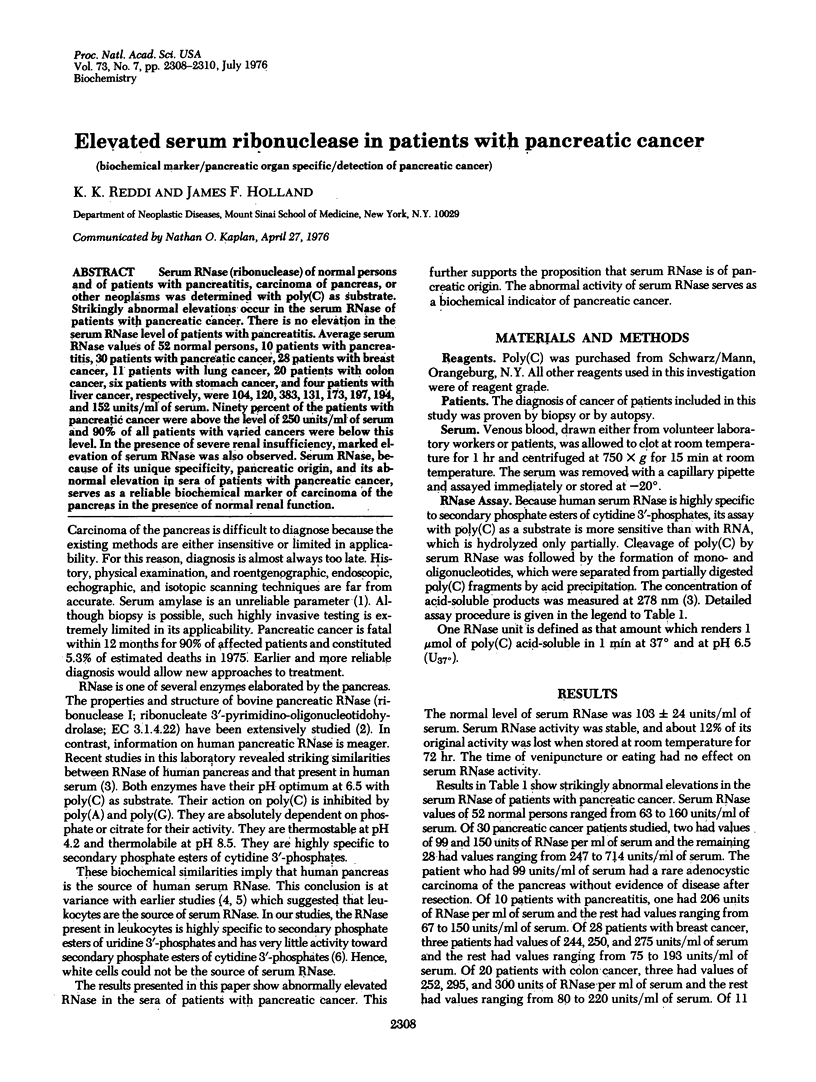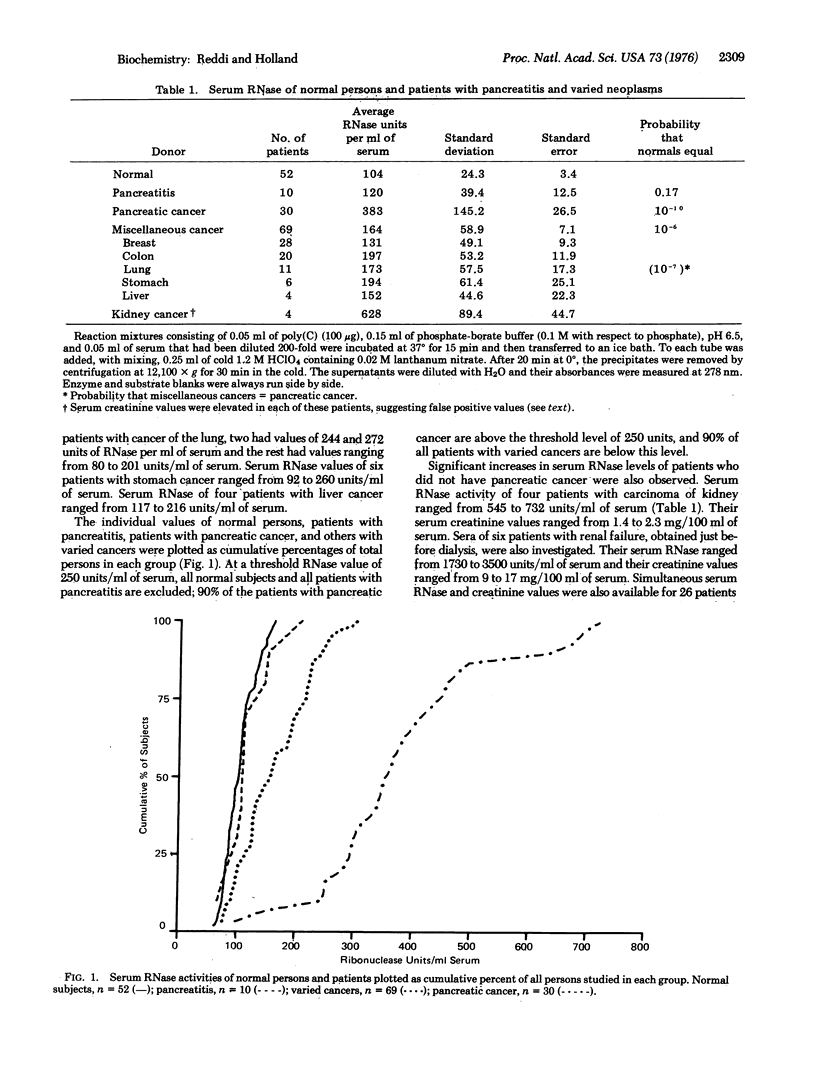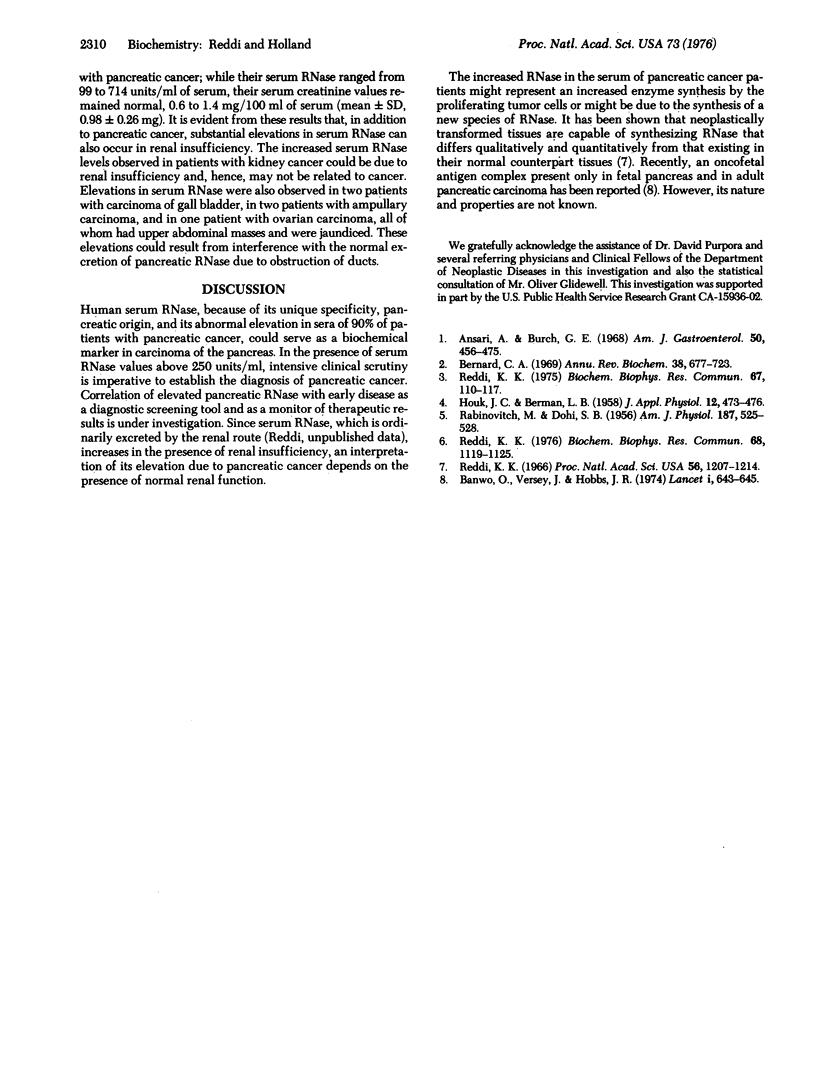Abstract
Serum RNase (ribonuclease) of normal persons and of patients with pancreatitis, carcinoma of pancreas, or other neoplasms was determined with poly(C) as substrate. Strikingly abnormal elevations occur in the serum RNase of patients with pancreatic cancer. There is no elevation in the serum RNase level of patients with pancreatitis. Average serum RNase values of 52 normal persons, 10 patients with pancreatitis, 30 patients with pancreatic cancer, 28 patients with breast cancer, 11 patients with lung cancer, 20 patients with colon cancer, six patients with stomach cancer, and four patients with liver cancer, respectively, were 104, 120, 383, 131, 173, 197, 194, and 152 units/ml of serum. Ninety percent of the patients with pancreatic cancer were above the level of 250 units of serum and 90% of all patients with varied cancers were below this level. In the presence of severe renal insufficiency, marked elevation of serum RNase was also observed. Serum RNase, because of its unique specificity, pancreatic origin, and its abnormal elevation in sera of patients with pancreatic cancer, serves as a reliable biochemical marker of carcinoma of the pancreas in the presence of normal renal function.
Full text
PDF


Selected References
These references are in PubMed. This may not be the complete list of references from this article.
- Ansari A., Burch G. E. A correlative study of proven carcinoma of the pancreas in 83 patients. Am J Gastroenterol. 1968 Dec;50(6):456–475. [PubMed] [Google Scholar]
- Banwo O., Versey J., Hobbs J. R. New oncofetal antigen for human pancreas. Lancet. 1974 Apr;1(7859):643–645. doi: 10.1016/s0140-6736(74)93197-3. [DOI] [PubMed] [Google Scholar]
- Barnard E. A. Ribonucleases. Annu Rev Biochem. 1969;38:677–732. doi: 10.1146/annurev.bi.38.070169.003333. [DOI] [PubMed] [Google Scholar]
- HOUCK J. C., BERMAN L. B. Serum ribonuclease activity. J Appl Physiol. 1958 May;12(3):473–476. doi: 10.1152/jappl.1958.12.3.473. [DOI] [PubMed] [Google Scholar]
- RABINOVITCH M., DOHI S. R. Increase in serum ribonuclease activity after bilateral nephrectomy. Am J Physiol. 1956 Dec;187(3):525–528. doi: 10.1152/ajplegacy.1956.187.3.525. [DOI] [PubMed] [Google Scholar]
- Reddi K. K. Human granulocyte ribonuclease. Biochem Biophys Res Commun. 1976 Feb 23;68(4):1119–1125. doi: 10.1016/0006-291x(76)90312-0. [DOI] [PubMed] [Google Scholar]
- Reddi K. K. Nature and possible origin of human serum ribonuclease. Biochem Biophys Res Commun. 1975 Nov 3;67(1):110–118. doi: 10.1016/0006-291x(75)90290-9. [DOI] [PubMed] [Google Scholar]
- Reddi K. K. Ribonuclease induction in cells transformed by Agrobacterium tumefaciens. Proc Natl Acad Sci U S A. 1966 Oct;56(4):1207–1214. doi: 10.1073/pnas.56.4.1207. [DOI] [PMC free article] [PubMed] [Google Scholar]


